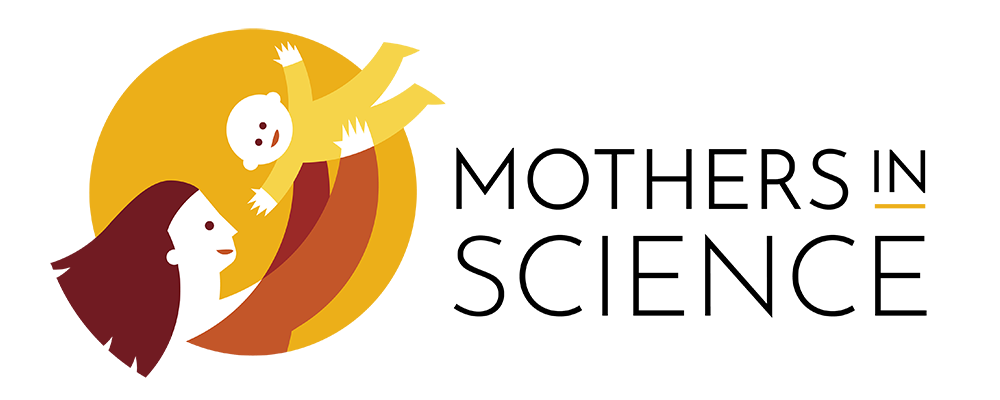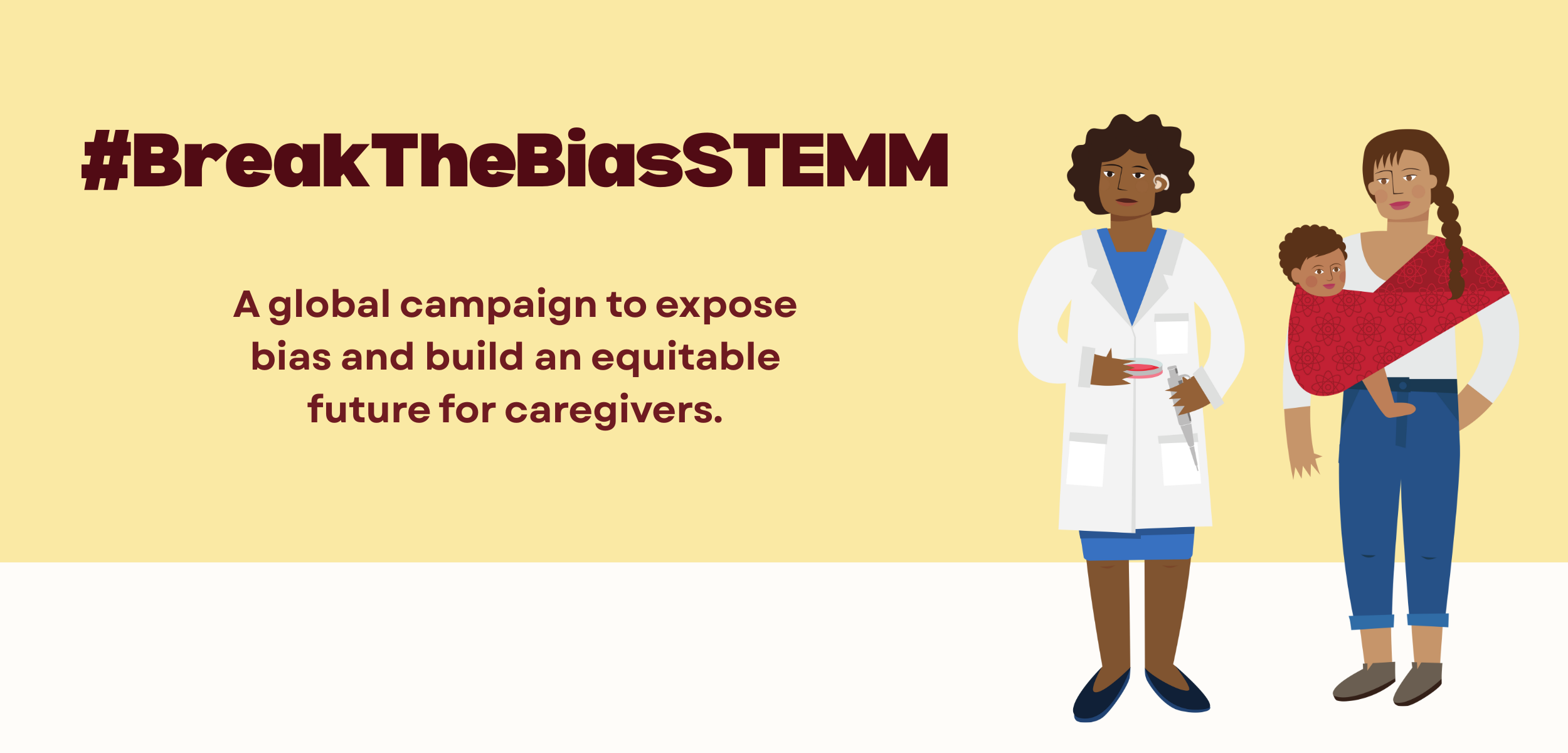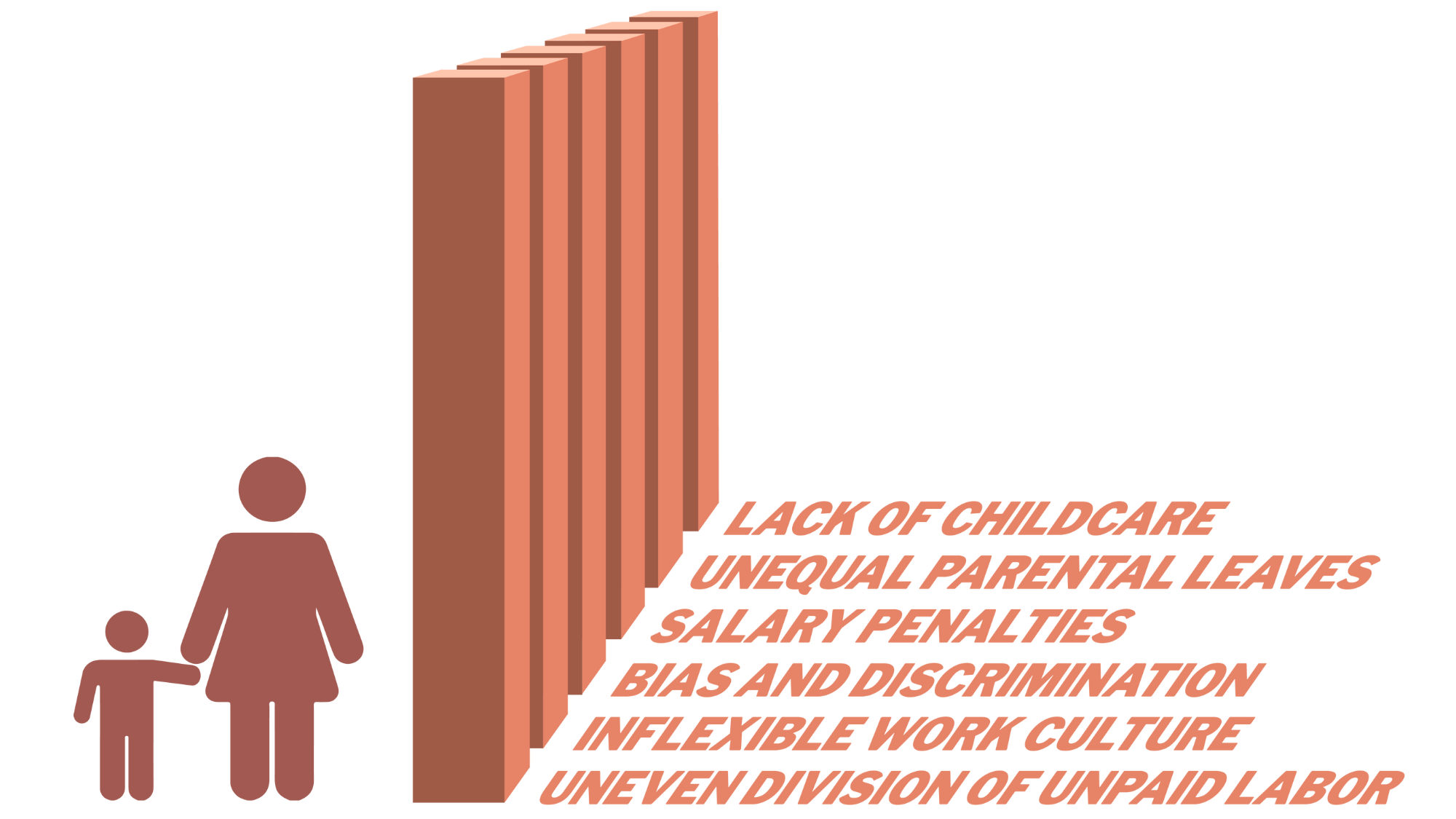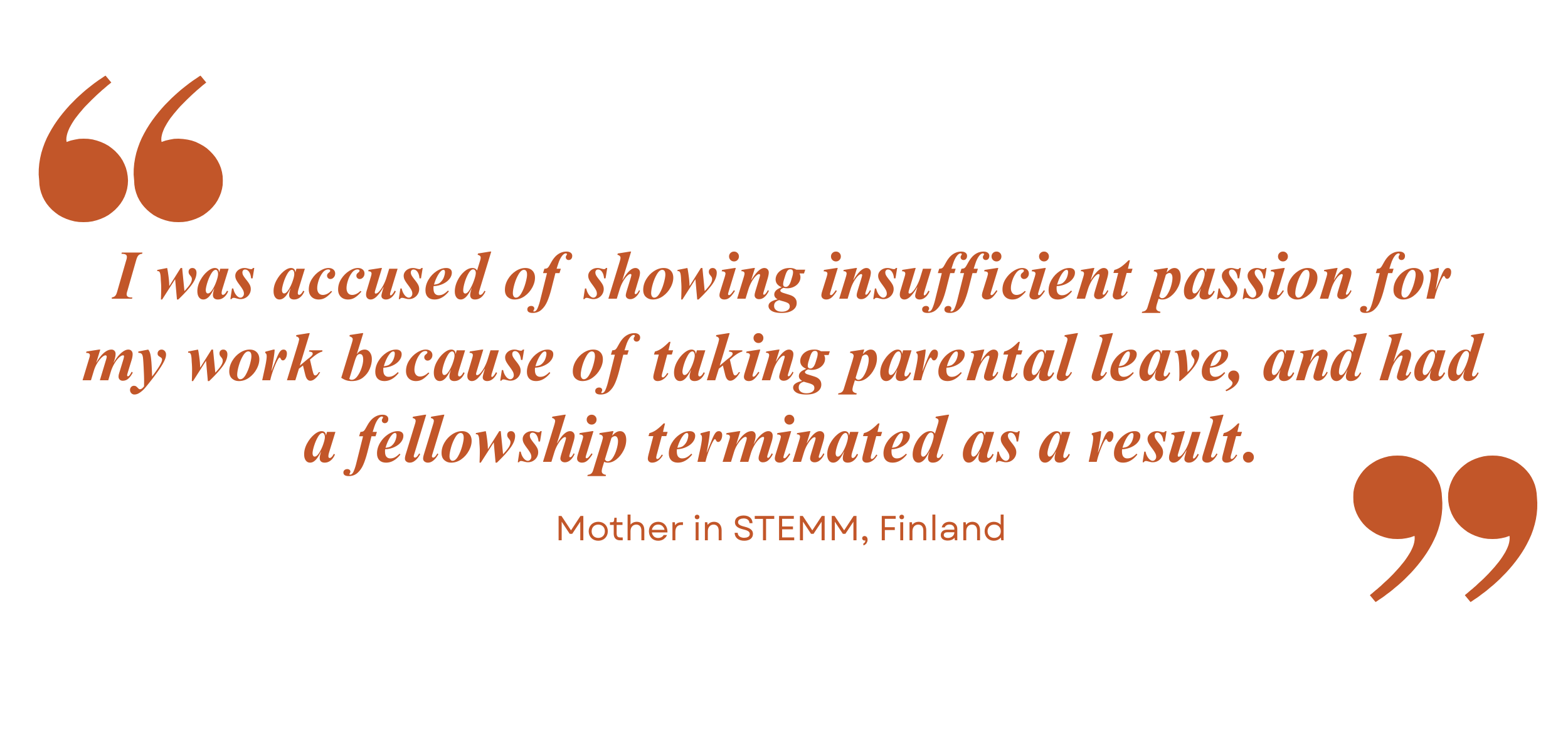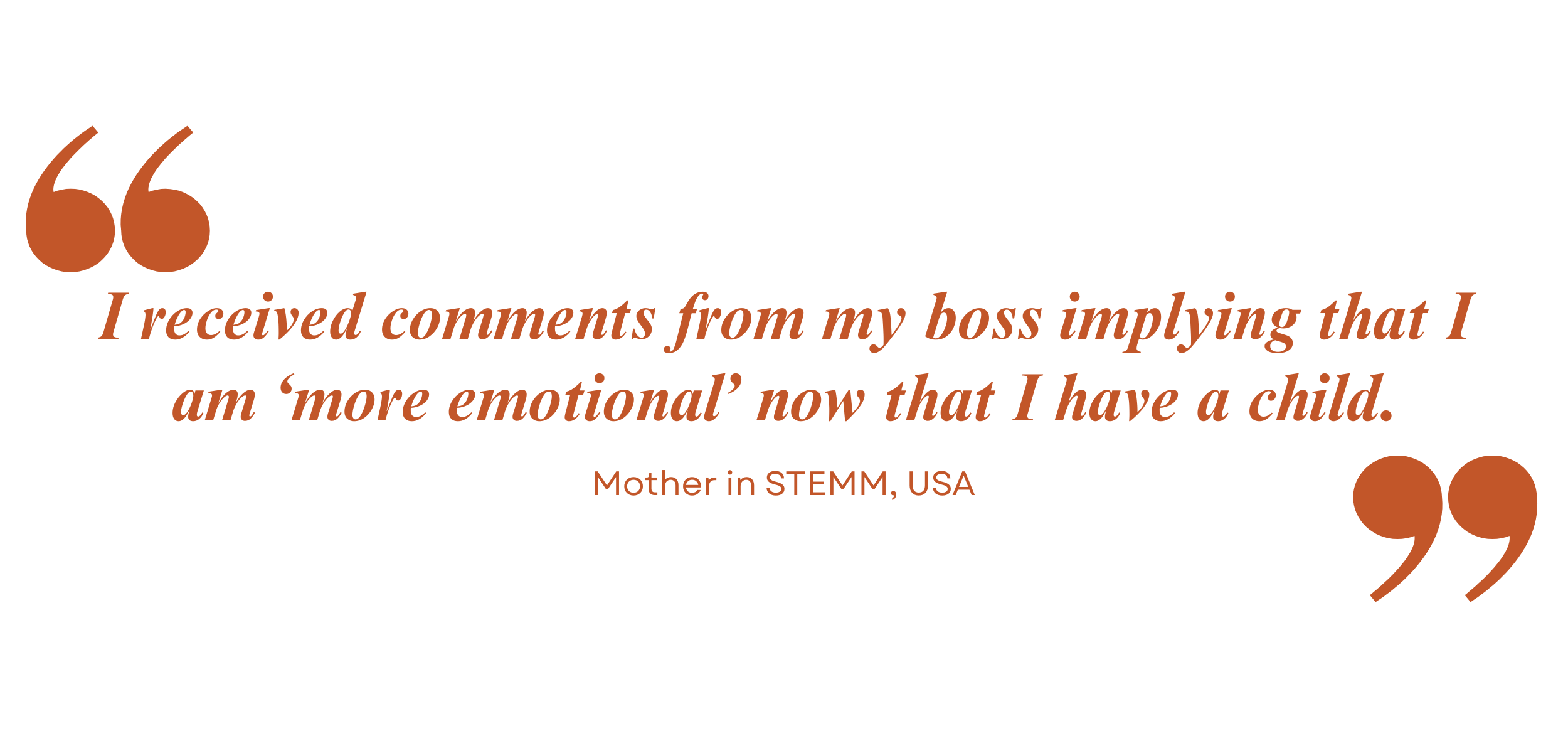Join the movement to end the motherhood penalty and advance equity for all caregivers.
Mothers continue to face bias and career penalties for caregiving, while fathers who share care often face stigma for stepping outside traditional roles. It’s time to challenge these double standards, break the bias, and create equitable workplaces that value caregivers.
Share your experience of workplace bias anonymously to help us raise awareness and push for change.
The motherhood penalty refers to the systemic disadvantages that mothers face in career progression, pay, and professional recognition compared with fathers or childless peers. It reflects deeply ingrained social norms and workplace practices that undervalue caregiving, assuming that productivity and family life are incompatible.
In the STEMM (science, technology, engineering, maths and medicine) sector, women are still vastly underrepresented in leadership positions, even in fields where they outnumber men at the doctoral level.
While gender bias remains a contributing factor, research increasingly shows the motherhood penalty is a major and yet overlooked barrier to women’s advancement in STEMM.
In the United States, 42% of mothers leave full-time STEM employment after becoming parents, compared with 15% of fathers, with more than 70% of the mothers that transition to entirely different sectors citing family-related reasons. Global data collected by Mothers in Science similarly show that 34% of mothers and 11% of fathers leave full-time STEMM positions after parenthood, with significant differences between countries (Sugrue et al. unpublished).
Despite these alarming statistics, most efforts to close the gender gap in STEMM focus on attracting women into the sector rather than removing the barriers that push them out. This is often rooted in the belief that women lack the confidence or ambition to pursue leadership roles, or that they “choose” to prioritize family over career. In reality, it is the normalization of gender norms and the myth of personal choice that obscure the structural barriers forcing women to leave or scale back their careers.
Mothers are repeatedly told that they “can’t have it all,” while fathers are still largely excused from taking an equal share of caregiving and domestic responsibilities.
Some of the main structural barriers include unequal parental leave policies, limited childcare options, and inflexible work cultures, which are compounded by societal expectations and gender norms pressuring mothers to devote themselves entirely to their families (intensive parenting and “perfect mother” myth)–leading many to decline professional opportunities such as leadership roles or attending conferences. Finally, deeply entrenched stereotypes and maternity bias portraying mothers as less competent or committed reinforce these obstacles, directly impacting their opportunities for promotion, equitable pay, and hiring.
Maternity bias, also know as maternal wall bias, is the strongest form of gender bias, and it occurs when people perceive mothers or pregnant women as less competent, ambitious, or committed to their work, when compared to their peers.
Unlike the “glass ceiling”, which blocks advancement at higher levels, maternity bias can appear much earlier–often the moment a woman becomes a mother–but studies show it can start even before pregnancy occurs, in what researchers call the “maybe baby effect”.
Young women perceived as likely to have children (eg. when they get married) are rated as less dedicated and are often offered shorter contracts or fewer benefits.
Maternity bias can manifest in many ways. Women may be offered fewer professional opportunities, excluded from projects, collaborations or leadership roles, or passed over for promotions and hiring based on assumptions about their priorities. Some experience demotions or even job loss, typically during or shortly after returning from maternity leave, when employers wrongly presume they will be less available or productive. Fathers, meanwhile, often receive a “fatherhood bonus” at work, because they are assumed to be more stable, committed and reliable than childless men.
Maternity bias is expressed in countless overt but also subtle ways, making it sometimes difficult to recognise and even harder to challenge. Mothers often also encounter benevolent stereotyping, when well-intentioned but harmful attitudes or decisions ultimately limit their career opportunities. For example, a supervisor might exclude a mother from a new project, assuming she doesn’t want the extra workload and would rather focus on her family.
A related pattern, known as flexibility bias, occurs when employees who request flexible or reduced hours—often mothers—are judged as less dedicated or less deserving of advancement than peers who work traditional schedules.
Flexible workers are penalized for not fitting outdated ideals of the “ideal worker” who is always available. The cumulative effect of these biases is profound. Women facing maternity bias often experience slower career progression, lower pay, exclusion from leadership roles, and professional isolation.
Results from global survey on 8,930 respondents from 128 conducted by Mothers in Science (September to December 2020, responses pre-covid).
Results from global survey on 8,930 respondents from 128 conducted by Mothers in Science (September to December 2020, responses pre-covid).
The impact of maternity bias is especially visible in academia, where it contributes to slower tenure progression, higher attrition, and a persistent gender gap among senior scholars. Yet research also shows that when institutions provide transparent evaluation criteria, equitable parental leave, and bias-awareness training, these disparities narrow.
This stigma isn’t confined to mothers. Fathers who are visibly engaged in caregiving also face penalties, a pattern sometimes called the “fatherhood forfeit”.
Men who take parental leave, work flexibly, or openly prioritize family responsibilities may be viewed as less ambitious or reliable, challenging cultural expectations of men as primary earners rather than active caregivers (see real examples in STEMM). This double standard underscores a broader caregiver stigma that punishes anyone, regardless of gender, who steps outside rigid work–family norms.
Overcoming maternity bias and caregiver stigma requires cultural and institutional change, recognizing that caregiving not as a weakness, but as a fundamental and valuable part of human life and work.
The #BreakTheBiasSTEMM global campaign seeks to expose maternity bias and drive action to dismantle the systemic barriers facing caregivers in STEMM. Through powerful data and real stories that reveal how these biases manifest, we mobilize institutions and policymakers to create workplaces where caregiving is recognised, supported, and valued. You can share your experience of maternity bias or caregiver stigma anonymously to help us raise awareness and push for change. Together, we can make change.
